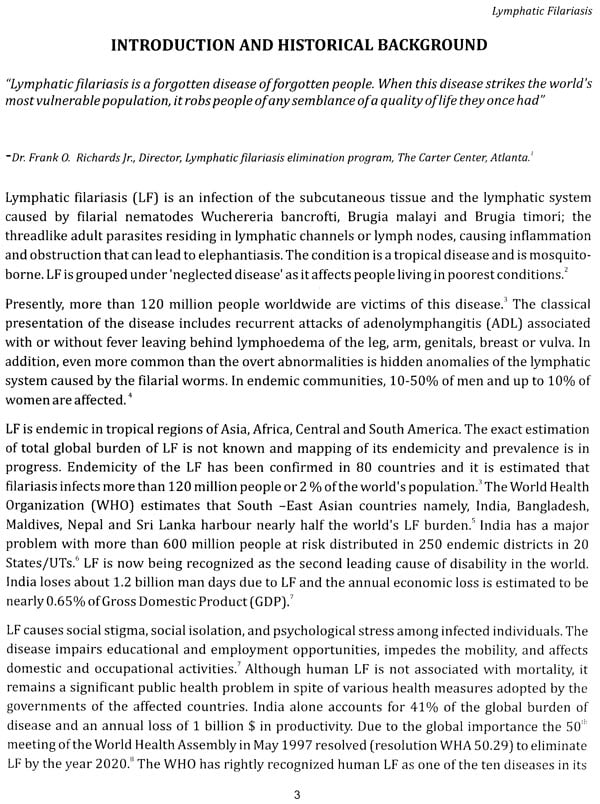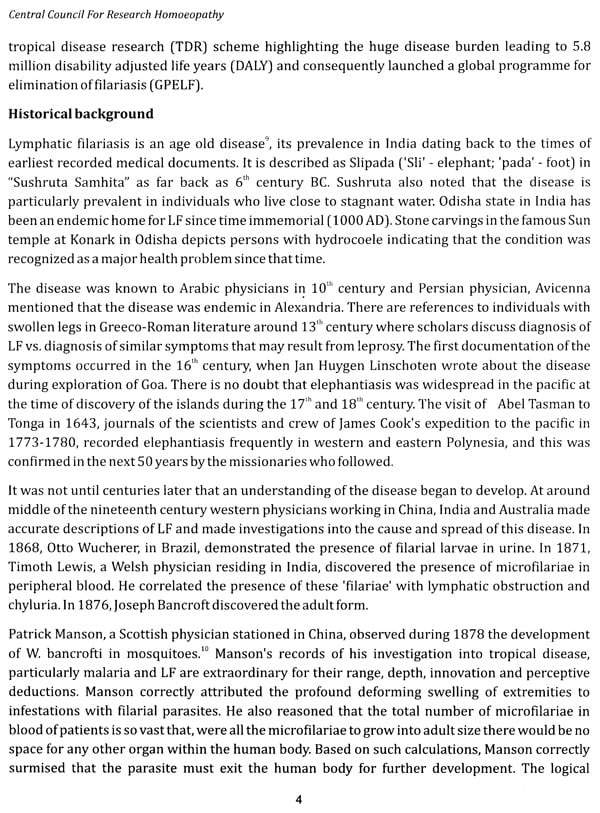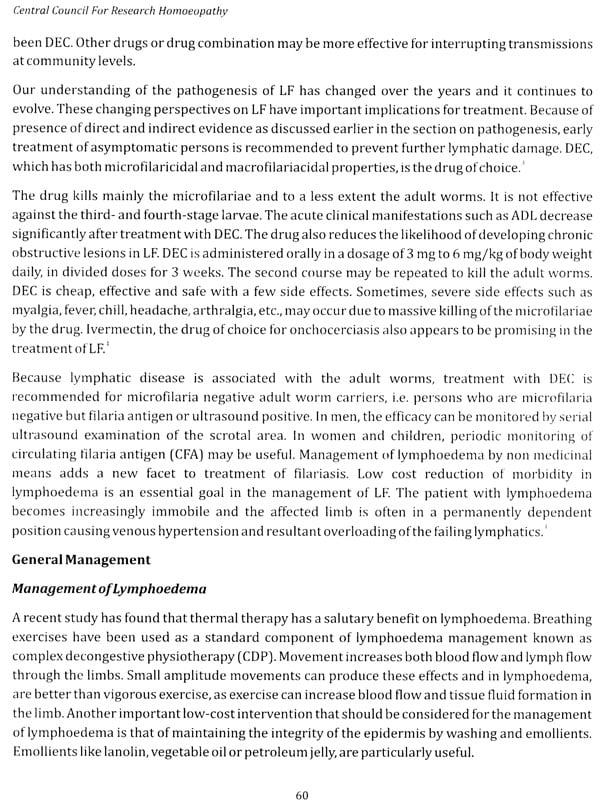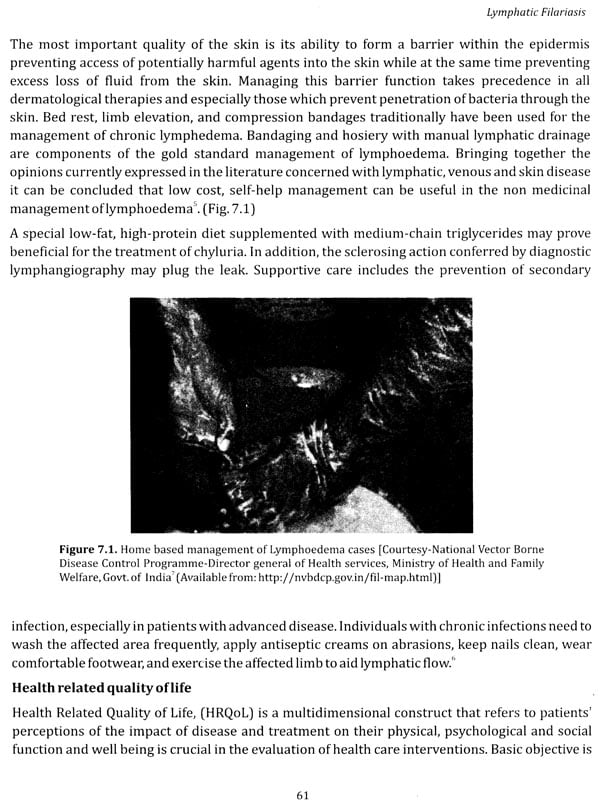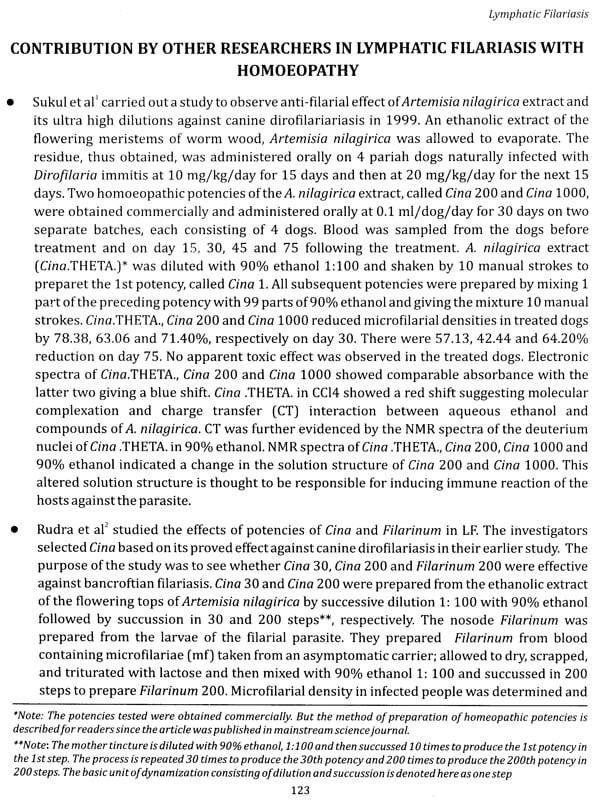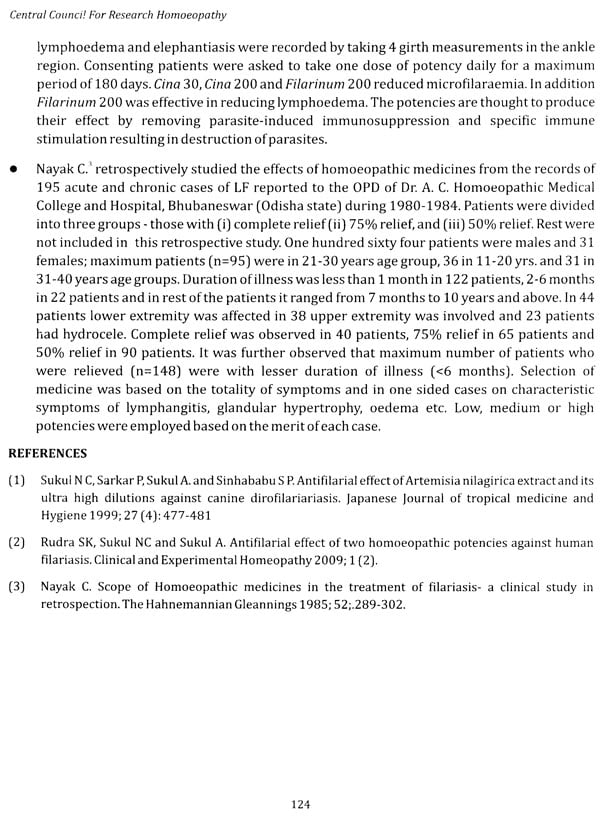
Homoeopathic Approach - Lymphatic Filariasis (An Old Book)
Book Specification
| Item Code: | NAW914 |
| Publisher: | Central Council for Research in Homoeopathy, New Delhi |
| Language: | English |
| Edition: | 2010 |
| ISBN: | 9788100000117 |
| Pages: | 138 (15 B/w Illustrations) |
| Cover: | PAPERBACK |
| Other Details | 11.00 X 8.50 inch |
| Weight | 350 gm |
Book Description
India has a rich tradition of indigenous systems of medicine and has accepted Homoeopathy as an integral part of its health care delivery system. Their availability all over the country has significantly contributed to the provision of health care of one form or the other in most parts of the country. In many rural settings and in some urban settings too, communities prefer to use traditional systems of medicine including Homoeopathy as the first point of contact or occasionally as the sole system of treatment. In many states the health system allows the simultaneous presence of all systems of medicine at the point of primary care, in an integrated fashion, thus allowing citizens a choice of systems for their health care needs. The department of AYUSH has actively promoted this integration and allowed practitioners of Indian Systems of Medicine & Homoeopathy to absorb the best practices of other systems of medicine. The effort to standardize the use of traditional medicines including Homoeopathy through controlled clinical trials is an important achievement in this area.
In order to promote a better understanding of the concepts of homoeopathy approach to management of diseases, the Central Council for Research in Homoeopathy (CCRH) has planned a series of disease monographs that highlights recent advances in disease of national importance. These monographs will provide valuable information to the practitioners of homoeopathic medicine regarding the changing landscape in the area of diagnosis and treatment of these disorders. Besides providing this latest information, they also highlight the national programmes covering diseases targeted for elimination or eradication. This dissemination of information will help in the active participation of homoeopathic practitioners in these national programmes as well. The first volume in this series is devoted to lymphatic filariasis.
I congratulate the CCRH for its Endeavour to bring out the monograph on lymphatic filariasis which will provide the current updates on the disease profile, the homoeopathic approach towards the management of this endemic disease and the outcome of the researches in Homoeopathy done globally on lymphatic filariases including those undertaken by CCRH
Homoeopathy has been found useful in the treatment of various parasitic infections, and homoeopathic materia medica records the therapeutics of certain clinical conditions covered under filariasis viz. lymphangitis, elephantiasis, lymphadenitis etc. Homoeopathic management had been proved useful in treating clinical filariasis in its various stages.
This monograph is intended to disseminate information regarding various aspects of lymphatic filariasis and sensitize the homoeopathic professionals about the importance of documenting successes and challenges in treating lymphatic filariasis. Through this monograph, effort is also made to place before profession the varied experiences and research findings of the studies undertaken by CCRH in a large number of cases over a period of more than two decades.
The information in the monograph covers the following topics -
- General information on lymphatic filariasis with current trends in epidemiology, immune-pathogenesis, clinical features, diagnostic techniques (including how to detect circulating parasitic antigens); psychosocial and economic burden, quality of life, elimination programmes and strategies, treatment and future directions.
- Concepts of health and disease in Homoeopathy in general and evolution of filariasis in particular; miasmatic understanding of filarial; interplay of susceptibility, miasms and clinical expressions in filarial and concepts on management of filarial through Homoeopathy.
- Research work done by CCRH through a multicentre study and studies done in collaboration with other institutes of repute on lymphatic filariasis.
- Contributions by other researchers in the field of homoeopathic management of lymphatic filariasis.
It is hoped that anything that contributes towards understanding of the problem helps, and it is in this context that the monograph is offered to the homoeopathic profession. Our Endeavour will be honored if the monograph will be useful to the research workers, clinicians, teachers, students and lovers of Homoeopathy, in their respective fields.
Book's Contents and Sample Pages

